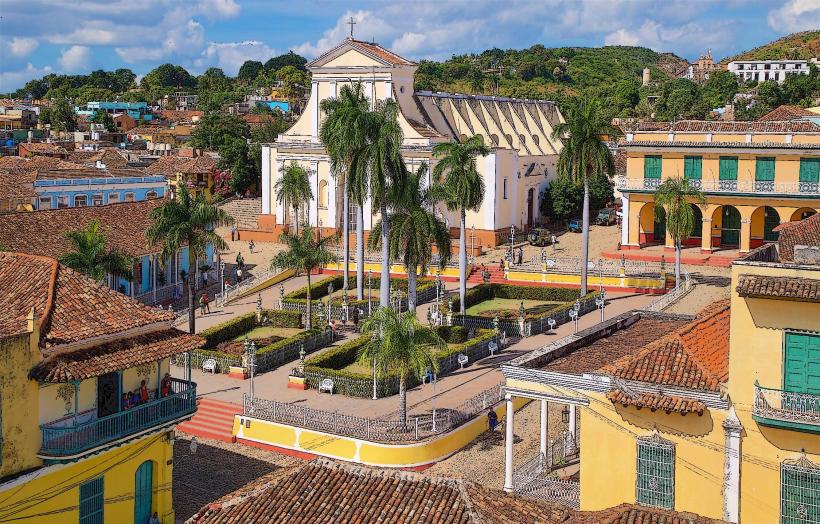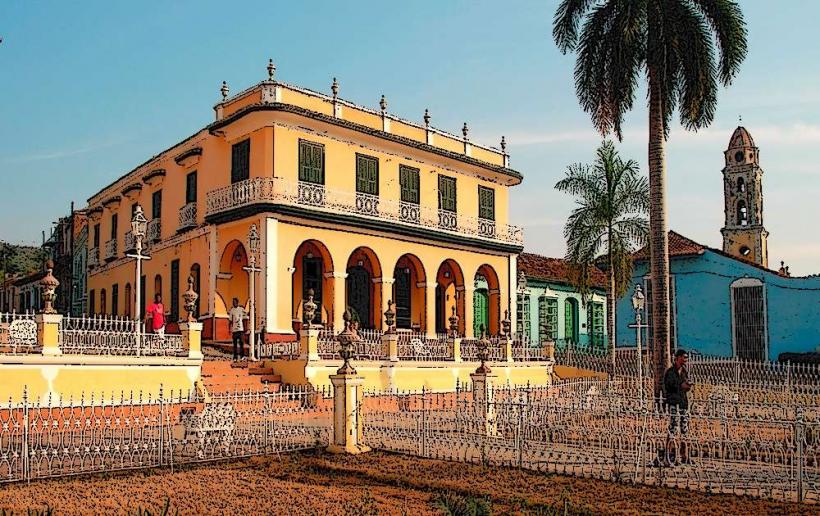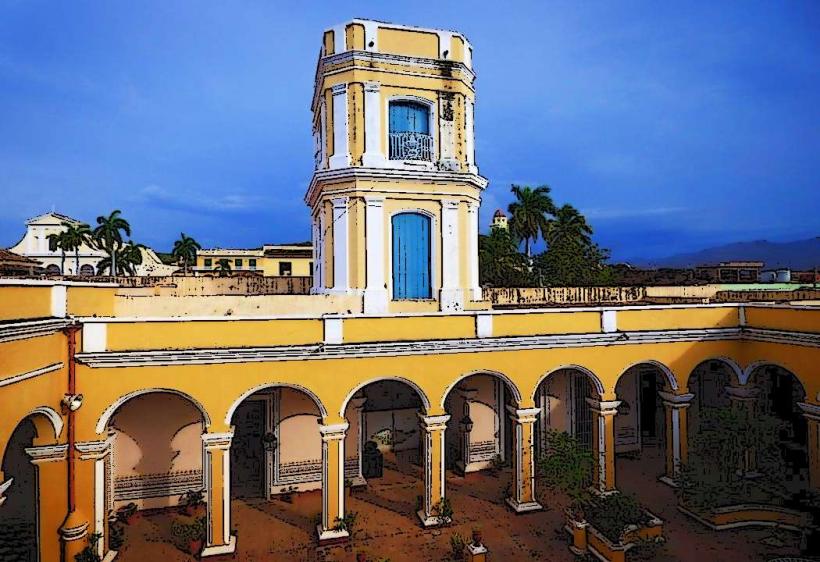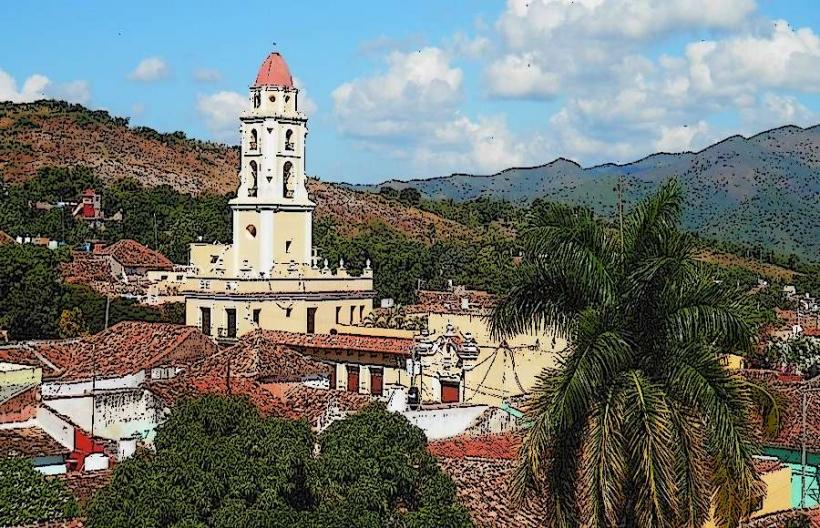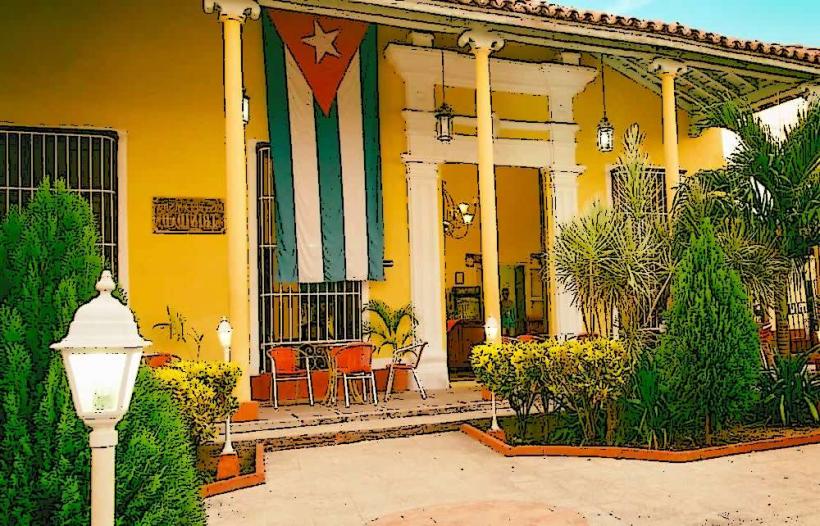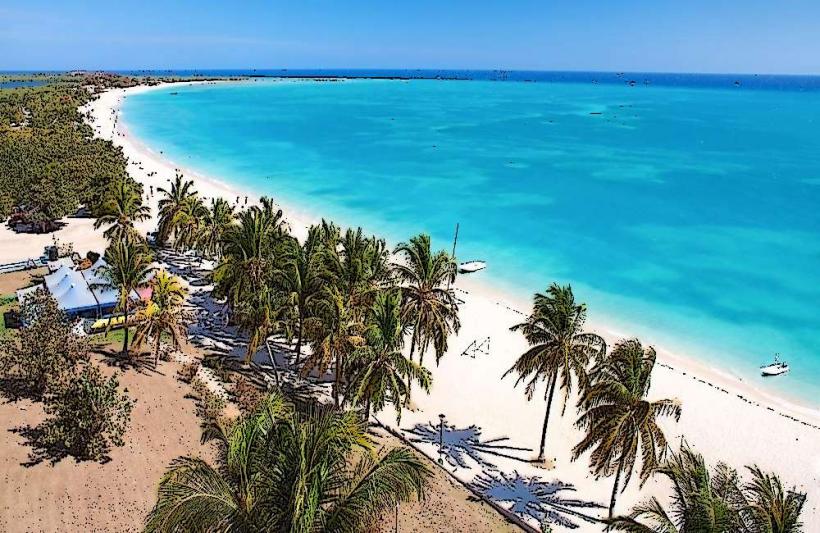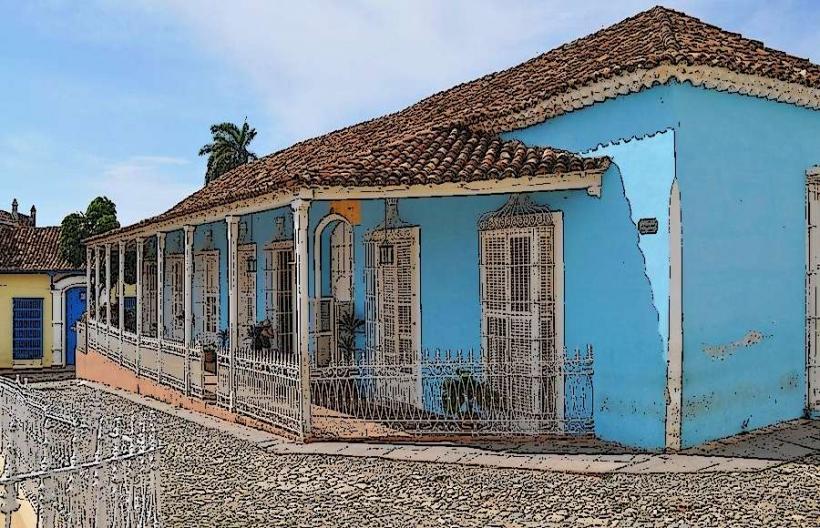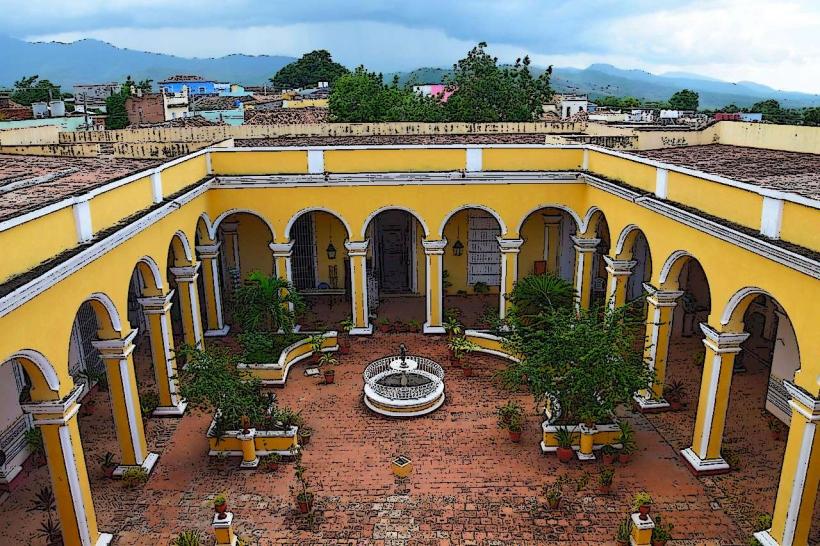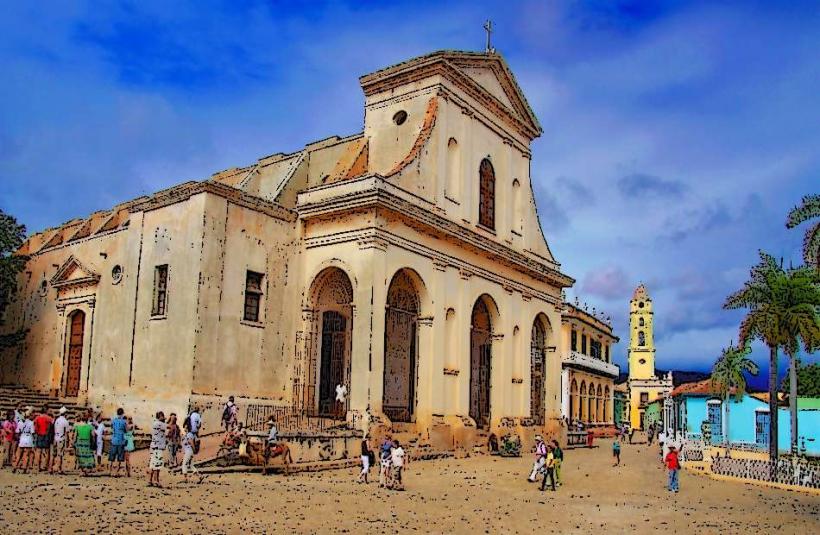Information
Landmark: Valle de los IngeniosCity: Trinidad
Country: Cuba
Continent: North America
Valle de los Ingenios (Valley of the Sugar Mills) is a historic and picturesque region located just outside Trinidad, Cuba. This UNESCO World Heritage site is known for its role in the island’s sugar industry during the colonial period. The valley is dotted with the remnants of sugar mills, plantations, and slave quarters, offering a unique glimpse into Cuba’s past, particularly the sugar boom of the 18th and 19th centuries.
Key Features of Valle de los Ingenios:
Historical Significance:
- Valle de los Ingenios played a crucial role in Cuba's sugar production, which was a major part of the island’s economy during the colonial era. The valley was home to many sugar plantations, some of the largest in Cuba at the time, that produced vast amounts of sugar to meet the demand in Europe and other parts of the world.
- The valley became one of the largest sugar-producing areas in the Americas, with its success largely driven by the forced labor of enslaved Africans. The sugar mills, the estates, and the villages built by these laborers are key elements of the valley’s history.
Architectural Heritage:
- The region is filled with the remains of colonial sugar mills, mansions, and slave quarters, many of which have been preserved or partially restored. The mills themselves are often large and imposing, reflecting the importance of the sugar industry at the time.
- Manaca Iznaga is one of the most famous sugar mills in the valley. This estate features the Iznaga Tower, a 45-meter (148-foot) tall structure originally built to keep watch over the estate. Visitors can climb the tower for panoramic views of the valley and the surrounding mountains.
- Casa de Iznaga, the estate house, and the surrounding slave quarters provide insight into the harsh conditions under which enslaved workers lived. The mansion itself reflects the wealth and power of the landowners during this period.
Natural Beauty:
- The valley is also renowned for its natural beauty, with lush green fields, rolling hills, and the distant backdrop of the Escambray Mountains. The landscape itself is captivating, with sugarcane fields stretching across the valley floor.
- The area is perfect for hiking and exploring, with trails that lead through the valley’s sugar plantations and other historical sites. The contrast between the valley's natural beauty and its historical significance adds to its appeal for visitors.
Cultural Heritage:
- Slavery and Sugar Production: Valle de los Ingenios is deeply tied to Cuba’s history of slavery and sugar production. The valley’s sugar mills and plantations were worked by enslaved Africans, whose labor was central to the success of the sugar industry. Many of the ruins in the valley are a reminder of the profound human cost of the sugar trade.
- The legacy of the enslaved Africans is still present in the valley today, reflected in local culture, music, and traditions. Visitors can learn about the history of slavery in Cuba and its impact on the social fabric of the island.
Attractions:
- Manaca Iznaga: The Iznaga Tower and the remains of the sugar mill are among the main attractions in Valle de los Ingenios. The tower offers fantastic views of the valley, and the adjacent estate is a well-preserved example of a colonial sugar plantation.
- Valle de los Ingenios Railway: A scenic way to explore the valley is by taking a ride on the historic sugar mill train, which runs from Trinidad to the valley. This train journey offers a glimpse of the valley’s sugar plantations and natural beauty.
- La Casa del Alfarero: Located near the valley, this artisan workshop allows visitors to watch local craftsmen create traditional Cuban pottery. This is an excellent stop for those interested in Cuban folk art and craftsmanship.
- Ruins of other sugar mills: While Manaca Iznaga is the most famous, there are other sugar mill ruins scattered across the valley, including San Isidro and Santa Rosa, which give further insight into the area’s history.
Activities:
- Guided Tours: The best way to explore Valle de los Ingenios is by taking a guided tour. Local guides offer insights into the history of the valley, the sugar mills, and the lives of the people who worked there, including the enslaved individuals.
- Hiking: For nature lovers, hiking through the valley is a great way to enjoy the landscapes while also learning about the history. The region offers both easy walks and more challenging hikes for those looking for a more active experience.
- Photography: The valley's combination of natural beauty and historical ruins makes it a photographer’s paradise. The sugar mills, mountains, and lush fields provide stunning backdrops for photos.
UNESCO World Heritage:
- Valle de los Ingenios, along with the nearby historic town of Trinidad, was designated as a UNESCO World Heritage Site in 1988. This recognition highlights the valley’s historical and cultural importance as a center of sugar production during the colonial era, as well as its role in the history of slavery and the sugar trade in the Americas.
Visitor Tips:
- Best Time to Visit: The best time to visit Valle de los Ingenios is during the dry season (November to April), as the weather is generally warm and sunny, ideal for outdoor activities like hiking and exploring the sugar mills.
- Transportation: Valle de los Ingenios is a short drive from Trinidad, and many visitors choose to hire a taxi or join a guided tour from the town. There are also buses and organized tours that head out to the valley.
- What to Bring: Wear comfortable walking shoes for exploring the valley, especially if you plan to visit the sugar mill ruins or hike. Bring sunscreen, water, and a hat for sun protection, as the area can get quite hot.
- Duration: A visit to Valle de los Ingenios can last from a couple of hours to a full day, depending on how much time you want to spend exploring the sites and enjoying the surroundings.
Conclusion:
Valle de los Ingenios is a historically rich and visually stunning region that offers visitors a deep dive into Cuba’s colonial past. The valley’s sugar mills, plantations, and remnants of slave quarters provide a sobering reminder of the history of sugar production and the human cost of this industry. At the same time, the valley’s natural beauty and the opportunity to explore its scenic landscapes make it a must-visit destination for anyone touring Trinidad and the surrounding areas.

